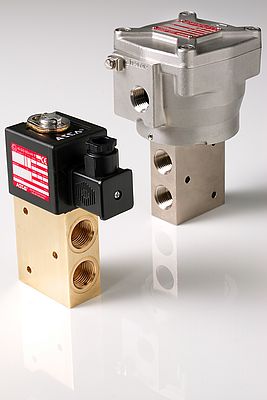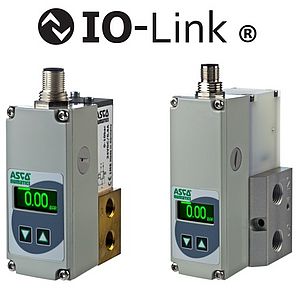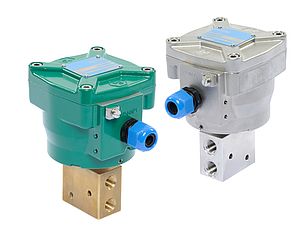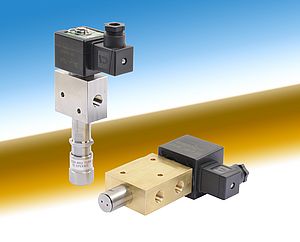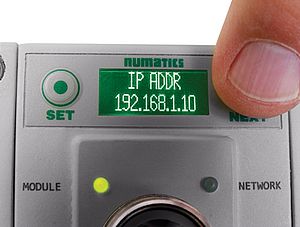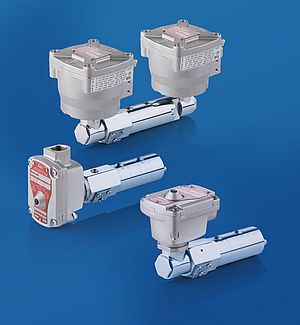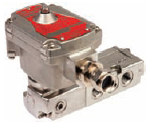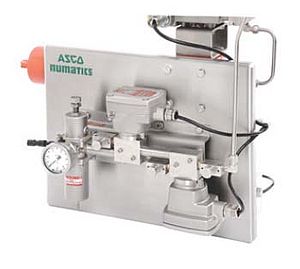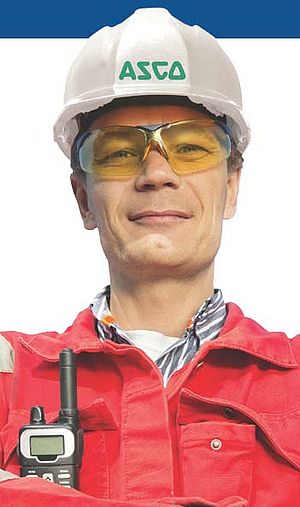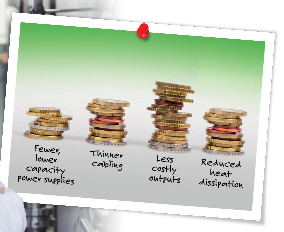In this article Wim van de Haar, Marketing Manager European Process Industry, ASCO Numatics, takes a look at the latest technologies being applied to pilot valve design and development to meet customer’s needs for low power solutions.
Solenoid valves have been used for more than 100 years in diverse flow control applications across many industries. As markets have emerged, manufacturers have developed new products and improved the performance of existing ranges to meet this growing demand. However, with installation and lifecycle costs taking a high profile, the focus for many end users has meant a move to lower power devices. Devices that use less power mean better economics and improved safety.
There are also emerging applications specifically for low power valves. For example, when these are combined with the latest wireless and solar technologies for automation or control they provide new opportunities in remote or hard to reach locations.
The challenge for the manufacturer has been to reduce the power requirements of existing ranges and develop new technologies that provide high performance and reliability with minimum power consumption.
Benefits of low power valves
Installing low power valves provides many benefits. For example, lower power consumption means more devices can be connected directly to control devices such as Process Control Systems (BPCS) and Programmable Logic Controllers PLC’s. Power supplies can be reduced in capacity or quantity, providing savings in cost and space. If the system is critical it may need to be protected by an uninterruptible power supply (UPS) and again a lower capacity unit can be specified. Reduced current means less voltage drop in the cable and it is therefore possible to increase operating distances or specify smaller cabling, providing economies in cable management devices such as channels and trunking. The higher resistance to undervoltage drops improves safety and, although the savings are not claimed to be huge, users can also expect to see lower energy bills.
Apart from these obvious savings over the life of a product there are other benefits associated with low power valve technology. Reduced power consumption means less heat being generated as the losses in the magnetic system are reduced. Heat can be an issue in a sealed cabinet where a bank of conventional solenoids can quickly raise internal temperatures beyond the specifications of other electronic devices in the cabinet. Removing excess heat may require fans, air-conditioning, or other cooling apparatus adding expense and increasing running costs.
Solenoid coil heat also reduces a valve’s life expectancy. Differing grades of coil-wire/insulation cover different ambient temperatures and the heat generated by the valve’s operation. As a measure of the effect that temperature has on the life of an operating coil, many engineers use a notional “ten degree C” rule of thumb. This determines that a coil’s thermal life approximately doubles for every ten degree Celsius reduction in operating temperature.
It is therefore good practice, from both an operational and an economic perspective, to eliminate any unnecessary heat.
Direct Acting Pilot Valves
With direct acting valves, the magnetic force of the solenoid acts directly on the valve’s operating mechanism. These valves do not require a minimum operating pressure which limits the pressure and flow capabilities of this group of valves. By optimising the magnetic circuit of the device using the latest materials and computer aided design techniques, power consumption can be significantly reduced without compromising the valve’s performance.
To meet the need for solenoid valves with lower power consumption the ASCO 327 series of direct acting solenoid pilot valves has been equipped with the most efficient solenoid, providing it with an enhanced magnetic circuit. The combined effect of these innovations is a reduction in power consumption from 11.2WDC for the standard product, to just 1.8WDC in the low power version.
Pilot Operated Spool Valves
A pilot-operated spool valve uses the inlet pressure to actuate the valve mechanism. Because pilot operated valves are indirectly controlling the flow, they generally have a lower power consumption. Because of this they require a minimum operating pressure differential to operate. For example, the ASCO Numatics (WS)LPKF low power solenoid which is used on the ASCO Numatics 551-552-553 ranges of spool valves has a power consumption of just 0.5W at 24V DC – an extremely low consumption for a Ex d certified solenoid valve for the process industry.
Flapper nozzle technology
Flapper nozzle technology provides an ultra low power consumption pilot that is designed to be mounted on pneumatic valves used in explosive atmospheres or in industries where harmful substances are present. Flapper technology controls the air supply to the main valve.
The air is fed to the pilot at the upstream pressure, P1. The pressure is reduced to P2 as the air passes through an orifice and then out of the nozzle. The closer the flapper is to the nozzle the greater P2 becomes. Energising or de-energising the flapper moves it closer or further away from the nozzle, changing the pressure in the spool and operating the valve. Energising a flapper requires very little energy, resulting in a pilot valve with ultra low power consumption. For example, the ASCO Numatics ultra low power pilot for Series 551 spool valves, which is based on this technology, has a power consumption of just 30mW. Flapper technology also means that the pilot can be used in Zone 1 areas (ATEX Directive).
Piezo technology
The piezoelectric technology can be used to provide a high technology solution where extremely low power consumption is required. The effect can be seen in certain crystalline minerals. When they are subjected to a mechanical force, the crystals became electrically polarised. The converse of this relationship is also true. When these voltage-generating crystals are exposed to an electric field they lengthen or shorten according to the polarity of the field, and in proportion to the strength of the field.
This effect is used in multi-layer piezoelectric elements which are the essential part of piezoelectric valves. The elements consist of at least two layers. When energised, one layer contracts and the other expands resulting in a bending effect, similar to that seen in thermo-bimetals. The bending effect is used to open and close the valve.
ASCO Numatics uses this effect in the Piezotronic valve with proportional control, designed for applications that demand an extremely low power consumption. The multi-layer technology reduces the power consumption to just 0.003W and the control voltage to only 20 to 40 volts making these valves suitable for use with battery-operated equipment or in potentially explosive areas.
Summary conclusion
Eliminating unnecessary power consumption saves money by reducing the size of copper wiring and the associated cable management devices, and by allowing the capacity and physical size of power components such as power supplies and UPS’s to be optimised.
Lower power consumption means less heat is generated reducing the need for ventilation or forced cooling by fans. This reduces costs and simplifies the installation. In addition, by running components at a reduced temperature their operating life is extended lowering failure rates and reducing maintenance costs.
Using lower power devices will reduce energy usage resulting in lower energy bills and a reduction in CO2 emissions.
Low power devices also provide new opportunities for control in remote or difficult to access installations where battery and/or solar power is the only power available. With the growing use of wireless technologies there are many applications which can now be controlled which previously would have been uneconomic or impractical to access.
Low power pilot valves
reduce cost, improve safety and extend operational life
- by Emerson Automation Solutions Div Fluid Control-Pneumatics
- April 25, 2011
- 9224 views


